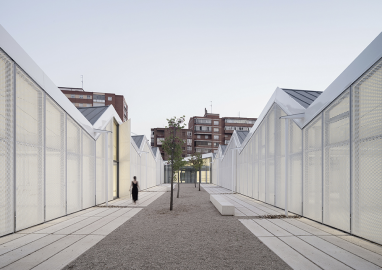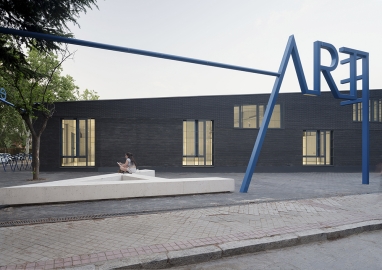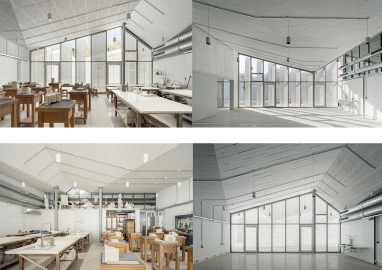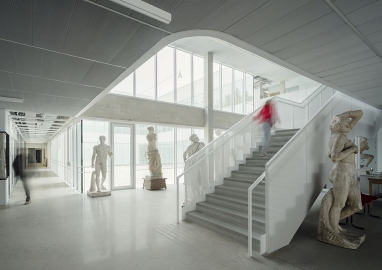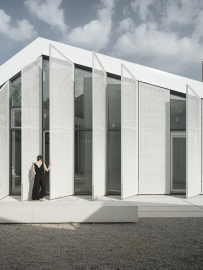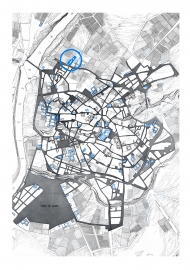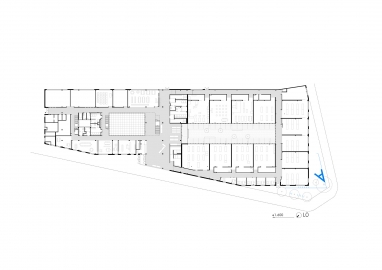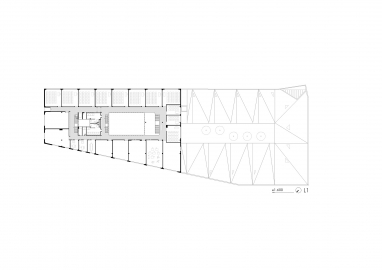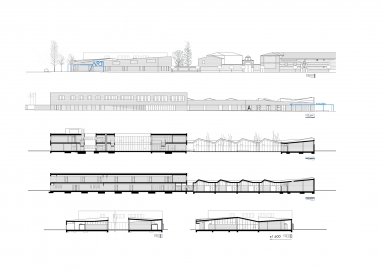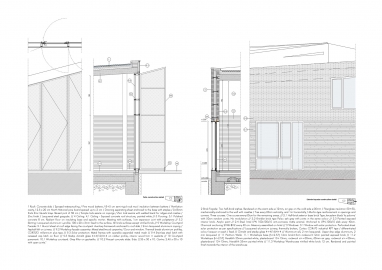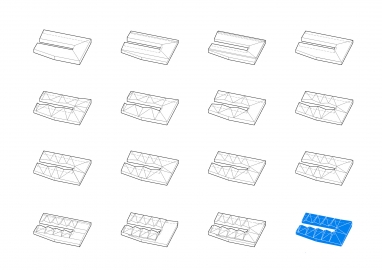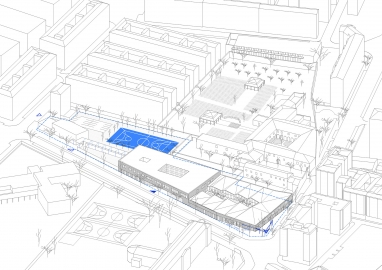Art School of Valladolid
Valladolid used to be a city of clusters and courtyards; mysterious and marvellous hidden spaces that generated heterotopias for reflection. Some examples remain and many have disappeared. For the new School of Arts, located in a plot that used to be part of a convent’s orchards, a courtyard system is replicated to generate a ‘space other’ for creation.
The educational program for Art studies has a dual aspect: a theoretical one and a practical one. That is why the project is materialized through two volumes enveloping two courtyards or 'cloisters' in concrete, through an opposing and complementary treatment of the material, expressing and representing the dual component of the artistic training it houses. In one of the structures, the use of lightweight concrete is optimized and technified, while in the other, the expressive potential of the constructive material is explored.
The lobby is the point of intersection between the different users of the building; the place where the diverse artistic disciplines come together. It is where common programs such as the library or the cafeteria are located. This space features a double height associated to the classroom’s patio, where meetings and events can be held.
Towards the city, the building shows itself as an architecture of walls, which continues the traditional architecture of the adjacent convent; towards the inside, it merges as an architecture of patios full of light and life. The project strives to be respectful of its historical context. However, it houses a space for creativity, youth and dreams. The essence of the project is the materialization of this duality.
Taking advantage of the location of the building in relation to the urban fabric, a small welcoming square is gifted to the city. This creates a meeting space, with oversized letters forming the word ART, for students and citizens to gather. Given its location in the street, it becomes part of the public space, activating the architecture.
The exterior is clad in black brick; an architecture of texture, materiality and colour, which creates a sort of mystifying atmosphere that surrounds and protects the inner world of creation. The interior is thought of, by opposition, as a technological space, white and bright with formal allusions to industrial architecture, production and creation.
The layout, inspired by the adjoining convent, mimics its courtyard architecture. The first articulates the classroom area on two levels, while the other, slightly larger, organizes the workshops under a folded concrete shell. The shell is constricted into a straight outline in the façade, folding into itself as it falls into the courtyard, creating a broken profile, resulting in large windows that overlook the patio. Solar protections become a prominent element, reaching from floor to ceiling, filtering the light into the workspaces. Depending on the use, they generate a vibrating or an abstract image. We imagine students sharing their experiences in this central space, as an agora for young, dynamic and versatile creation.

